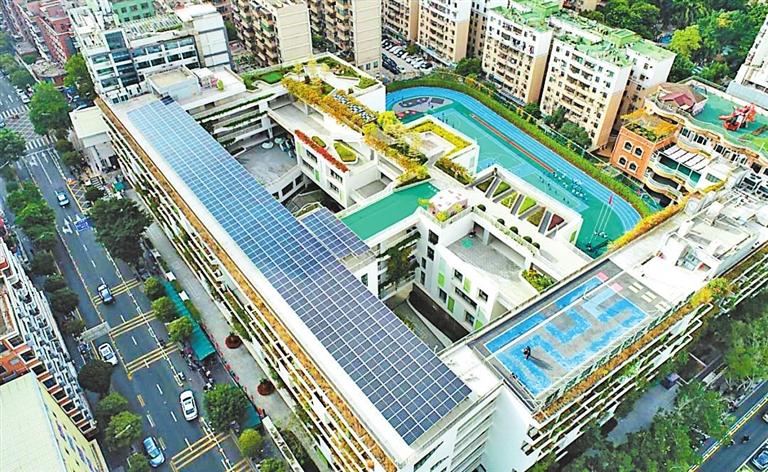
Wang Jingli wangjingli0715@163.com CHINA has set forth dual carbon goals of reaching peak carbon emissions by 2030 and carbon neutrality by 2060. Over the years, Shenzhen, among the country’s first batch of low-carbon pilot cities, has been devoted to promoting green and low-carbon development in a bid to contribute to the country’s dual carbon goals. As per Shenzhen’s 14th Five-Year Plan (2021-2025) for climate change released in 2022, the city will carry out a total of 100 near-zero emission demonstration projects by 2025. These projects include industrial parks, residential communities, schools, buildings and companies. According to the plan, Shenzhen will also speed up the building of an international low-carbon city with high standards, accelerate the construction of carbon neutrality pilot demonstration zones in Longgang District and Qianhai, and build a number of pilot projects for pollution and carbon reduction in industrial parks. As of the end of April, the city’s total area of green buildings had exceeded 160 million square meters and the number is expected to reach 235 million square meters by 2025. Near-zero carbon projects A group of near-zero projects have been completed in Shenzhen since this year, including the renovation of Xinzhou Primary School in Futian District. The renovated Xinzhou school, completed this May, has become the city’s first pilot near-zero carbon campus. After renovation, roof of the school building is covered with photovoltaic panels, which produce about 180,000 kWh of electricity per year, achieving a carbon reduction of about 20%. There is also a low-carbon education corridor equipped with smart trash bins and electricity-generating bikes to add more fun and promote the low-carbon concept. Air conditioners at the campus can be remotely controlled. Moreover, lights turn on automatically when there are people coming and off when people are leaving. The renovation project has set a good example for near-zero carbon campus, according to the school. Also in May, Yantian District inaugurated a near-zero carbon science museum to improve the public awareness of garbage classification and carbon emission reduction, especially among young people, and help the district build a near-zero carbon pilot community. The museum, located at No. 260 Wutongshan Boulevard, covers an area of nearly 300 square meters and includes three visiting zones. It is one of Yantian District’s important projects to promote green and low-carbon development, according to district officials. Green industry, green consumption As cycling has become a preferred choice for traveling, Shenzhen has cooperated with bike-sharing giant Hello Inc. to launch a carbon reduction program, encouraging citizens to support green development through riding shared bikes. Liu Xinglin from the Shenzhen office of Hello Inc. said that the carbon inclusive project aims to use incentives such as points rewards to mobilize people to participate in carbon reduction. More companies have also joined green development endeavors. This year, a total of 14 enterprises have been designated as green companies in recognition of their contributions to environmental preservation, according to information released by the city’s environment protection authority. The 14 enterprises have used clean energy or energy-saving equipment to reduce their electricity and water consumption. For instance, Shenzhen Kangtai Biological Products Co. Ltd., one of the recognized companies, has installed solar photovoltaics, effectively reducing carbon dioxide emissions by approximately 933 tons annually. Longgang District aims to spend the next five to 10 years building a hub for the new energy industry with an annual output value of over 100 billion yuan (US$14 billion) at its new energy industrial park by attracting leading new energy enterprises, according to the district’s first hydrogen summit held recently. The added value of Shenzhen’s green and low-carbon industry will reach 200 billion yuan by 2025, according to Shenzhen’s 14th Five-Year Plan for climate change. Last but not the least, as green and eco-friendly concepts have gradually penetrated into people’s daily lives, market players also sniffed business opportunities to create green consumption scenarios. By the end of this April, a low-carbon themed supermarket was unveiled in Shenzhen. The supermarket applied green development ideas in its construction materials, cold chain equipment, packaging and products, among others. | 
